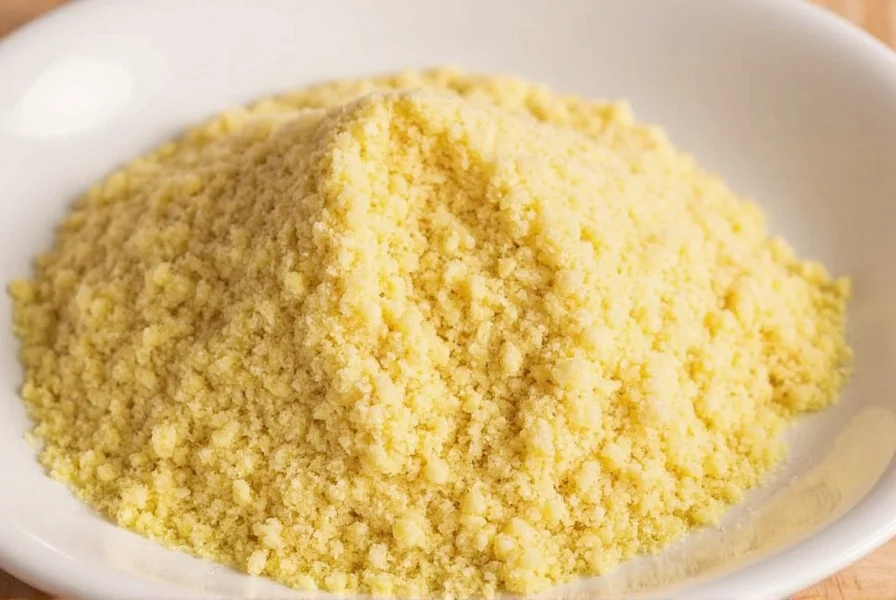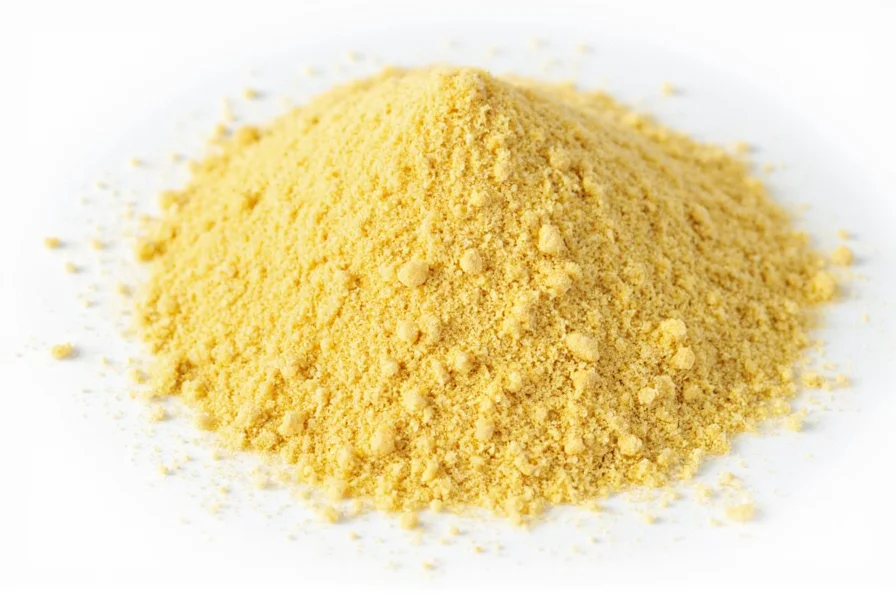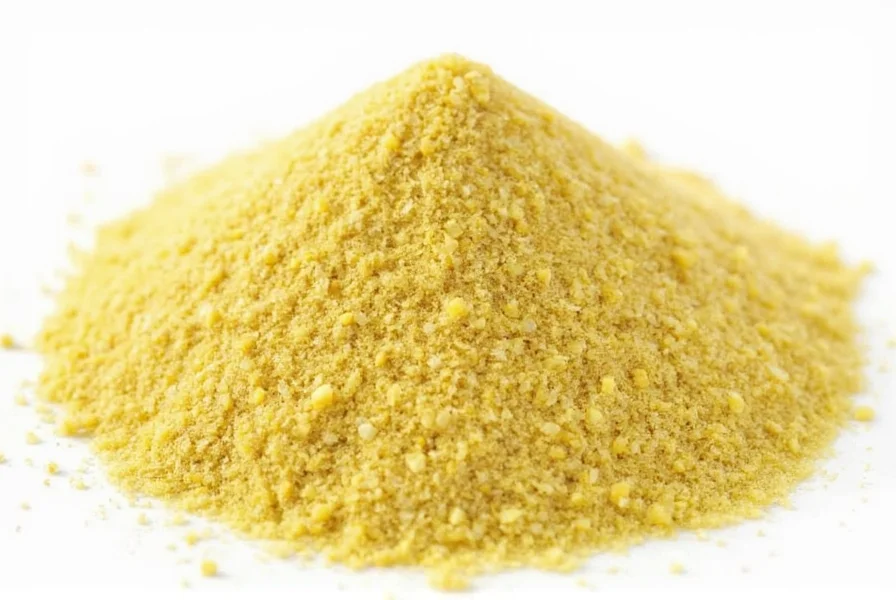Use 1/4 teaspoon of ground ginger for every 1 tablespoon of fresh ginger required in your recipe. This precise ground ginger to fresh ginger conversion ratio accounts for the concentrated nature of dried spices compared to their fresh counterparts.
When you're in the middle of cooking and realize you're out of fresh ginger, knowing how to substitute ground ginger for fresh becomes essential. The standard conversion ratio—1/4 teaspoon ground ginger equals 1 tablespoon fresh ginger—is based on flavor concentration differences between the two forms. Ground ginger contains less moisture and more concentrated flavor compounds than fresh ginger root, making this substitution ratio critical for maintaining recipe balance.
Understanding the Flavor Difference
While the conversion ratio provides a mathematical solution, understanding the flavor profile differences ensures better cooking results. Fresh ginger offers a bright, citrusy, and slightly spicy flavor with noticeable heat. Ground ginger, being dried and powdered, has a warmer, more earthy, and slightly sweeter profile with less pronounced heat.
This flavor distinction matters most in dishes where ginger plays a starring role rather than a supporting one. In recipes like ginger snaps or ginger tea, where ginger is the primary flavor, the substitution may noticeably alter the final product. For dishes where ginger complements other ingredients, such as in stir-fries or curries, the substitution works well with minimal impact.
| Recipe Type | Substitution Viability | Adjustment Tips |
|---|---|---|
| Baking (cookies, cakes) | Excellent | Use exact conversion ratio; ground ginger distributes more evenly |
| Stir-fries & sautés | Good | Add ground ginger earlier in cooking process |
| Raw preparations (salads, dressings) | Poor | Avoid substitution; fresh texture is essential |
| Ginger tea | Fair | Reduce by 1/8 tsp and add citrus to brighten flavor |
When Substitutions Work Best
Certain cooking applications handle the ground-to-fresh ginger substitution better than others. Baked goods represent the ideal scenario for substitution because:
- The dry ingredients naturally accommodate powdered spices
- Moisture differences matter less in batter-based recipes
- Ground ginger distributes more evenly throughout the mixture
- Longer cooking times mellow any flavor discrepancies
For savory dishes, add ground ginger earlier in the cooking process than you would fresh ginger. Since ground ginger lacks the moisture content of fresh, it needs more time to rehydrate and release its flavors into the dish. In liquid-based recipes like soups and curries, this presents no problem, but in quick-cooking stir-fries, add ground ginger to hot oil first to bloom its flavors before adding other ingredients.

When to Avoid Substitution
Not all recipes tolerate this substitution equally. Avoid replacing fresh with ground ginger in:
- Raw preparations like salads or fresh dressings where texture matters
- Ginger-based beverages where fresh ginger's bright notes are essential
- Recipes specifically highlighting ginger as the star ingredient
- Dishes requiring the fibrous texture of fresh ginger
In these cases, consider alternative substitutes like galangal (for Southeast Asian dishes), grated apple with a pinch of cinnamon, or even a small amount of grated horseradish for the spicy kick, depending on your recipe's requirements.
Storage Considerations
Understanding proper storage helps maximize the shelf life of both forms. Fresh ginger root keeps for 2-3 weeks in the refrigerator when stored in a paper bag or wrapped in paper towel inside a sealed container. For longer storage, freeze whole or grated ginger in an airtight container.
Ground ginger maintains peak flavor for 2-3 years when stored properly in an airtight container away from light and heat. While it won't spoil, its potency diminishes over time. Test older ground ginger by rubbing a small amount between your fingers—if the aroma is weak, it's time to replace it.

Practical Recipe Adjustments
When substituting ground ginger for fresh in specific recipes:
- For baking: Use the standard 1:3 ratio (1/4 tsp ground = 1 tbsp fresh) without adjustments
- For stir-fries: Reduce the amount by 1/8 teaspoon and add with wet ingredients
- For marinades: Mix ground ginger with liquid ingredients first to prevent clumping
- For beverages: Steep ground ginger in hot liquid for 5-7 minutes before use
Remember that personal taste preferences play a role—some people prefer the warmer notes of ground ginger in certain applications. When in doubt, start with slightly less than the conversion ratio suggests, then adjust to taste after cooking.
Frequently Asked Questions
Can I use ground ginger instead of fresh in ginger tea?
Yes, but with adjustments. Use 1/4 teaspoon ground ginger per cup of water instead of a 1-inch slice of fresh ginger. Steep for 5-7 minutes and consider adding a squeeze of lemon to brighten the flavor, as ground ginger lacks the citrus notes of fresh.
Why is the conversion ratio for ground ginger to fresh ginger 1:3?
The 1:3 ratio (1/4 tsp ground = 1 tbsp fresh) accounts for moisture loss during drying. Fresh ginger is about 80% water, while ground ginger has most moisture removed, concentrating the flavor compounds. This ratio maintains equivalent flavor intensity in most recipes.
Does ground ginger have the same health benefits as fresh ginger?
Most beneficial compounds remain in ground ginger, though some volatile compounds degrade during drying. Gingerol (the main active compound) converts to zingerone when dried, offering similar but not identical health properties. For maximum benefits, fresh ginger contains higher levels of certain enzymes and volatile oils.
Can I substitute fresh ginger for ground ginger in recipes?
Yes, but reverse the ratio: use 1 tablespoon freshly grated ginger for every 1/4 teaspoon of ground ginger called for. Increase cooking time slightly to allow moisture to evaporate and flavors to concentrate, especially in baked goods.
How do I prevent clumping when substituting ground ginger for fresh?
Mix ground ginger with a small amount of liquid from your recipe (broth, oil, or water) to form a paste before adding to the dish. This prevents clumping and ensures even distribution, especially important when substituting in sauces or marinades.











 浙公网安备
33010002000092号
浙公网安备
33010002000092号 浙B2-20120091-4
浙B2-20120091-4